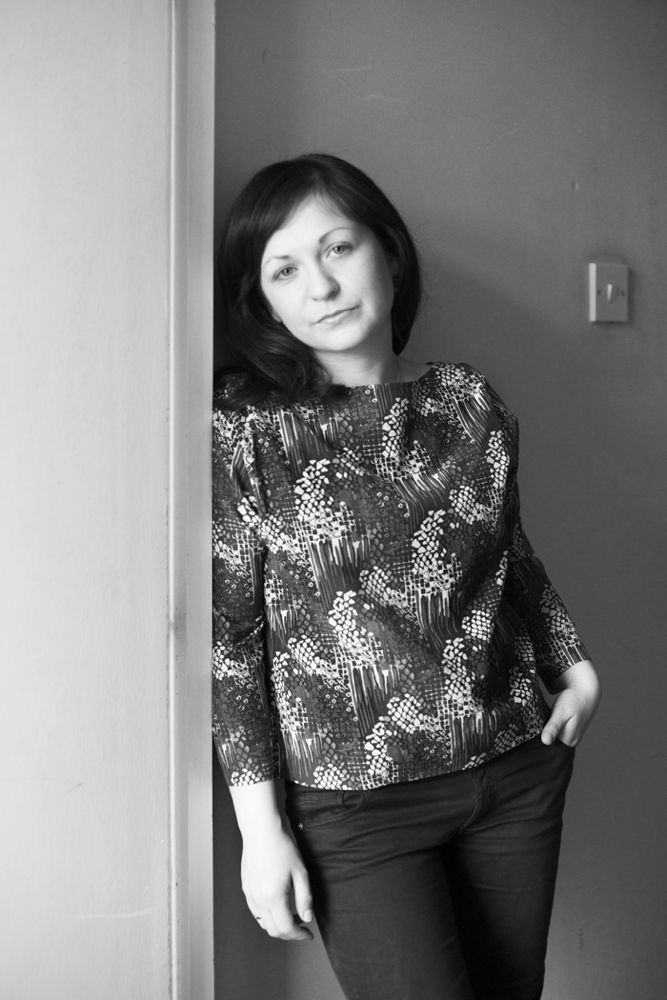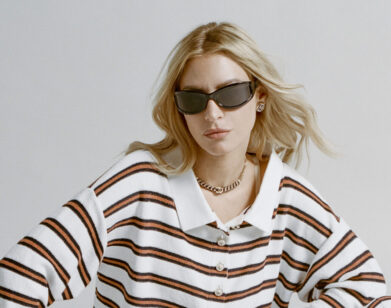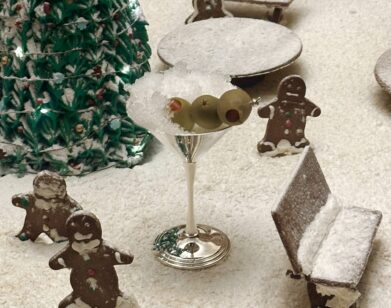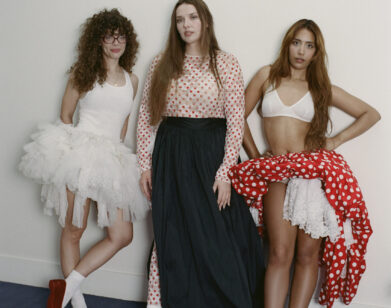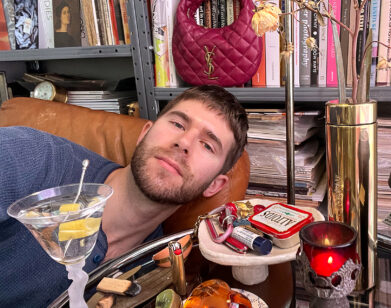Una Burke Is No Girly Girl
Accessories designer Una Burke may have grown up on a farm in a small, rural, Irish town. But that didn’t stop her from dreaming of fashion. Literally. “I have no idea why, but from the age of 14, in that stage between wake and sleep, I would see models going up and down a catwalk,” says the 31-year-old. “I didn’t grow up surrounded by fashion at all. I was surrounded by fields and flowers and animals, so I hadn’t seen these clothes anywhere. But I could see stitching details on the pockets. And it would happen all the time, so I knew I wanted to go into fashion. It was really weird,” she giggles before hypothesizing that watching her mother sew her pink childhood dresses may have influenced the visions. “I was a real girly girl,” she admits.
This designer is a girly girl no more. Today, Burke creates handcrafted grommeted leather body armor and accessories out of her London studio. She’s positively pint-sized, cute as a button and has the sunniest disposition imaginable. So the subject of her work—trauma, deformity, death rituals, you get the idea—coupled with her creations, like a flesh-toned body cast crafted from leather strips, or a hunchback jacket, may seem surprising. However, her wearable sculptures, which feature impeccable structure and soft, feminine lines, are delicately elegant, rather than startling.
Burke, who received a Masters in Fashion from the London College of Fashion, and worked with Phillip Treacy, Burberry, and a host of other UK design studios before launching her line in 2010, says she was drawn to leather because of her upbringing. “It’s a beautiful, quality product and I really appreciate quality as well as longevity,” she explains. “Leather ages beautifully. Like fine wine and cheese. I suppose because of my upbringing, I’ve got an appreciation of everything that I have. Growing up on a farm, I have respect for animals and for the fact that I work with an animal skin, which I think people are too flippant about,” she explains, suggesting that her grandfather’s career as a cobbler may have instilled a genetic appreciation for craft in her veins. As for her unsettling influences, Burke insists that they all come from her fascination with the human psyche. “I’m interested in people and their reactions and provoking different reactions. Not for a mean reason, but just out of genuine interest,” she says earnestly.
Considering that, since showing her graduate collection in 2009, she’s caught the attention of countless editors, won numerous awards, like Irish Designer of the Year in 2011, and produced looks for the likes of Daphne Guinness, Lady Gaga, and Rihanna, it would seem Burke’s provocative ways have paid off.
Despite the fetishistic implications of her studded leather works, Burke asserts that her designs have little, if anything, to do with sex. “I genuinely don’t intend for there to be a fetish aspect,” she says in a flustered tone. “It kind of frustrates me that people go there so often. It’s too easy. It’s leather. There’s metal on it. So it must have something to do with sex. But the pieces are actually intended to enhance the female form,” she says. Come March 22, Burke’s work will be featured in a SHOWstudio exhibition, “Selling Sex,” which deals specifically with this issue. The show, located at the publication’s London headquarters, will exhibit works by female artists who deal with the female form; thus eliminating the male gaze and its proclivity for sexualizing femininity. “The show is so my way of thinking,” says the designer, who has also done a capsule collection for Joyce Hong Kong, which will be available on their website come April.
Burke’s fall 2012 collection, which recently made its debut at Premiere Classe during Paris Fashion Week, is decidedly lighter than those we’ve seen in seasons past. Although it was spurred by stress dreams of drowning, as well as the designer’s complicated relationship with water (she finds it at once terrifying and calming), the intricate, swirling gold, plum, navy and evergreen accouterments were largely inspired by decorative maritime elements. “I went to the National Maritime Museum. I’ve always loved the construction of boats, and that’s reflected in some of the pieces. But there was this one ship in which royalty used to travel and it really struck me. It had these gilded, swirling lines so I brought a lot of that into the collection,” she says. Her regal, whirling details appear on ladylike handbags, headpieces and belts. And while her woman remains the same—strong, resilient and “warrior-like,” (“I love strong characters. I hate weak. And I hate bland,” she laughs)—her collection seems almost whimsical in comparison to her previous work. “I suppose the concepts in the past are really dramatic and focus on the inner feelings. But maybe this collection is the way it is because I’m becoming more content as a person,” she says, smiling.

